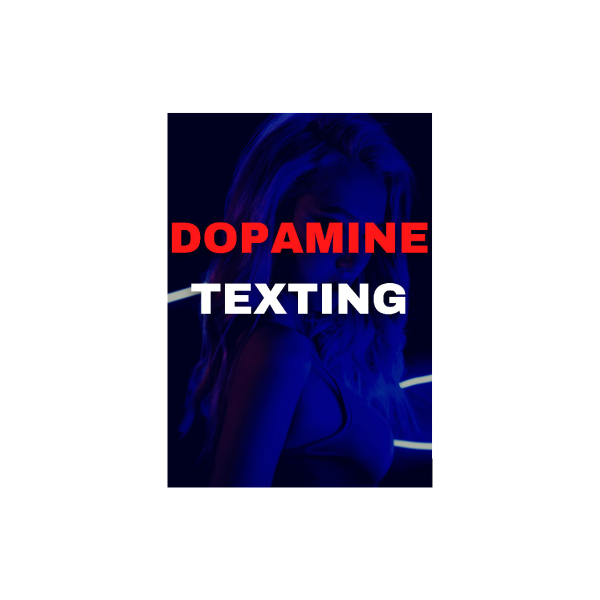
When I jump into the world of digital communication, especially through concepts like the Dopamine Texting Program, I’m fascinated by the science that powers our desire to stay connected. Dopamine, often referred to as the “feel-good” neurotransmitter, plays a crucial role in how we perceive and engage with texting. It’s not just about the words we exchange; it’s about the anticipation of the interaction. Every time our phone pings with a new message, our brain gets a little hit of dopamine, reinforcing the action and compelling us to keep checking for more.
This feedback loop is what the Dopamine Texting Program taps into. By creating messages that are inherently more engaging or have an element of surprise, the program amplifies this dopamine response. It’s a clever blend of psychology and technology aimed at making digital communication not only more addictive but also more satisfying. The science is clear: the way messages are crafted and delivered can significantly influence our emotional and psychological engagement with them.
When I first encountered the Dopamine Texting Program, I was intrigued by its potential to revolutionize how we interact with our devices. This program does more than just send texts; it transforms the act of messaging into an experience that’s both engaging and rewarding. By understanding the science of dopamine and its effect on our behavior, the developers have crafted a platform that keeps users coming back for more.
The clever integration of anticipation in each message ensures that every notification is a promise of something exciting, encouraging users to stay engaged. It’s about creating a positive feedback loop; the more a user interacts with the messages, the more dopamine gets released, and the happier the user feels. This loop is the cornerstone of enhancing user experience, ensuring that engagement levels are consistently high.
Also, the program’s use of surprising and varied content means that the user’s dopamine levels remain elevated. It’s not just about the anticipation but also the fulfillment that comes with receiving something unexpectedly delightful. This approach keeps the user experience fresh and exciting, far from the mundane repetition found in many other messaging platforms.
By blending psychological insights with technological innovation, the Dopamine Texting Program has set a new standard for digital communication. It’s not just about sending messages; it’s about crafting experiences that enrich the user’s day-to-day interaction with their device.
In my exploration of the Dopamine Texting Program, I’ve discovered its significant impact on digital communication. This innovative approach harnesses the power of dopamine, a key neurotransmitter associated with pleasure and reward, to fundamentally transform how we interact with digital devices. But what does this mean for everyday digital communication?
Firstly, the integration of dopamine-inducing mechanisms into texting creates a more engaging user experience. By incorporating elements that trigger anticipation and surprise, the program ensures that users are consistently motivated to engage with their devices. This not only enhances the quality of digital interactions but also fosters a deeper connection between users and their digital world.
Also, the program’s ability to sustain user interest over time by delivering varied and unexpected content means that digital communication becomes an ever-evolving world. This dynamic approach prevents the usual fatigue associated with monotonous digital interactions, keeping the user experience fresh and exciting.
By combining psychological insights with cutting-edge technology, the Dopamine Texting Program sets a new benchmark for what’s possible in digital communication. It’s clear that by leveraging the science of dopamine, we’re not just enhancing digital experiences; we’re redefining them.
The Dopamine Texting Program is more than just a technological advancement; it’s a gateway to reimagining how we connect in the digital age. By tapping into the power of dopamine, it’s not only enhancing user engagement but also setting a benchmark for future communication platforms. As we move forward, embracing this innovative approach will undoubtedly transform our digital interactions, making them more enjoyable and deeply connected. It’s clear that the future of messaging lies in creating experiences that keep users coming back for more, and the Dopamine Texting Program is leading the way. It’s an exciting time to be part of this digital evolution, and I’m eager to see how it continues to unfold.
The Dopamine Texting Program is a digital communication tool that uses dopamine-inducing elements, such as anticipation and surprise, to revolutionize user interactions with digital devices, ensuring sustained engagement and a deeper connection with technology.
By delivering varied and unexpected content, the program prevents user fatigue and transforms digital communication into a more dynamic and exciting experience, fostering a deeper connection with the digital world.
Dopamine, often linked to pleasure and reward in the brain, plays a crucial role in the program by creating feelings of anticipation and surprise, which help in sustaining user engagement and satisfaction during digital interactions.
Yes, the Dopamine Texting Program effectively prevents user fatigue by continuously delivering varied and unexpected content, keeping the user’s experience fresh and engaging.
The program redefines digital interactions by integrating psychological insights with cutting-edge technology to create a dynamic and enriching user experience that maintains engagement through elements of surprise and anticipation.
After your purchase, you’ll receive a delivery email from us with a download link once we’ve verified and processed your order, typically within a few minutes to a few hours. If you have any questions or need assistance, feel free to reach out to us via live chat – we’re here to help!
All the Courses and Books that are available in our store are digital editions and Not Physical, and are delivered by email.
If you are teacher or you need a lot of books and courses that you need for fair price, Yes we can help and we can do bulk orders. and please contact us for that.
We understand the concern many have about the legitimacy of online platforms, especially when they offer courses and books at affordable prices. Here’s why you can trust coursesblock.com:
No There is no limitation to the number or type of devices you can access courses on.